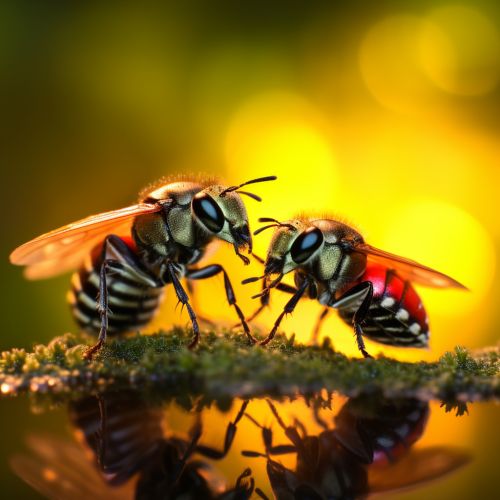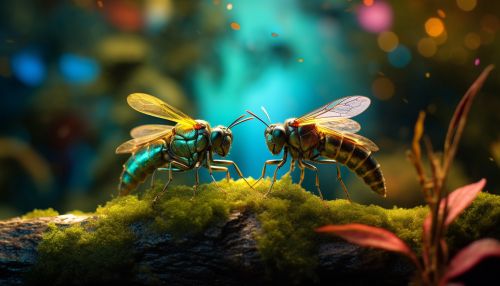Insect communication
Introduction
Insect communication is a complex and fascinating field of study, involving a variety of methods and mechanisms that insects use to interact with each other and their environment. These methods include chemical, visual, acoustic, and tactile signals, each of which plays a crucial role in the survival and reproduction of insect species. This article delves into the intricacies of insect communication, providing a comprehensive and detailed examination of the subject.


Chemical Communication
Chemical communication, also known as chemoreception, is the most common form of communication among insects. This involves the use of chemical signals, or pheromones, which are emitted by an individual and detected by another. Pheromones play a crucial role in a variety of insect behaviors, including mating, foraging, and social organization.
Pheromones
Pheromones are volatile chemical compounds that are secreted by insects to elicit a specific behavioral response in other members of the same species. These chemical signals can be classified into several types, including sex pheromones, alarm pheromones, trail pheromones, and aggregation pheromones.
Sex pheromones are used by many insect species to attract mates. For example, female moths release a specific blend of chemicals that can be detected by males over great distances. Alarm pheromones are emitted by some insects, such as ants and bees, to alert other members of the colony to danger. Trail pheromones are used by social insects like ants to mark paths to food sources, while aggregation pheromones attract individuals to a common location, often for mating or feeding.
Visual Communication
Visual communication in insects involves the use of visual signals, such as coloration, patterns, and movements, to convey information. This form of communication is particularly important in diurnal insects, which are active during the day and rely heavily on visual cues.
Coloration and Patterns
Many insects use coloration and patterns as a form of visual communication. Bright colors and distinctive patterns can serve as warning signals to predators, a phenomenon known as aposematism. For example, the bright colors of many butterfly species signal to predators that they are toxic or unpalatable.
In contrast, some insects use coloration and patterns for camouflage, blending in with their environment to avoid detection by predators. This is known as crypsis.
Movements
In addition to coloration and patterns, insects also use movements as a form of visual communication. These movements can be simple or complex and can convey a variety of messages. For example, the waggle dance of honey bees is a well-known example of movement-based communication, where a bee communicates the location of a food source to its hive mates through a series of specific movements.
Acoustic Communication
Acoustic communication involves the use of sound signals to communicate. This form of communication is common in many insect species, including crickets, cicadas, and grasshoppers, which produce sounds by rubbing their body parts together, a process known as stridulation.
Tactile Communication
Tactile communication, or touch-based communication, is another important form of communication in insects. This is particularly prevalent in social insects, such as ants and bees, which use touch to communicate a variety of messages, including food location, danger, and colony status.
Conclusion
Insect communication is a complex and multifaceted field, involving a range of methods and mechanisms that are crucial for survival and reproduction. From chemical signals to visual cues, sound signals to touch, insects have evolved a diverse array of communication strategies that are as fascinating as they are varied.
